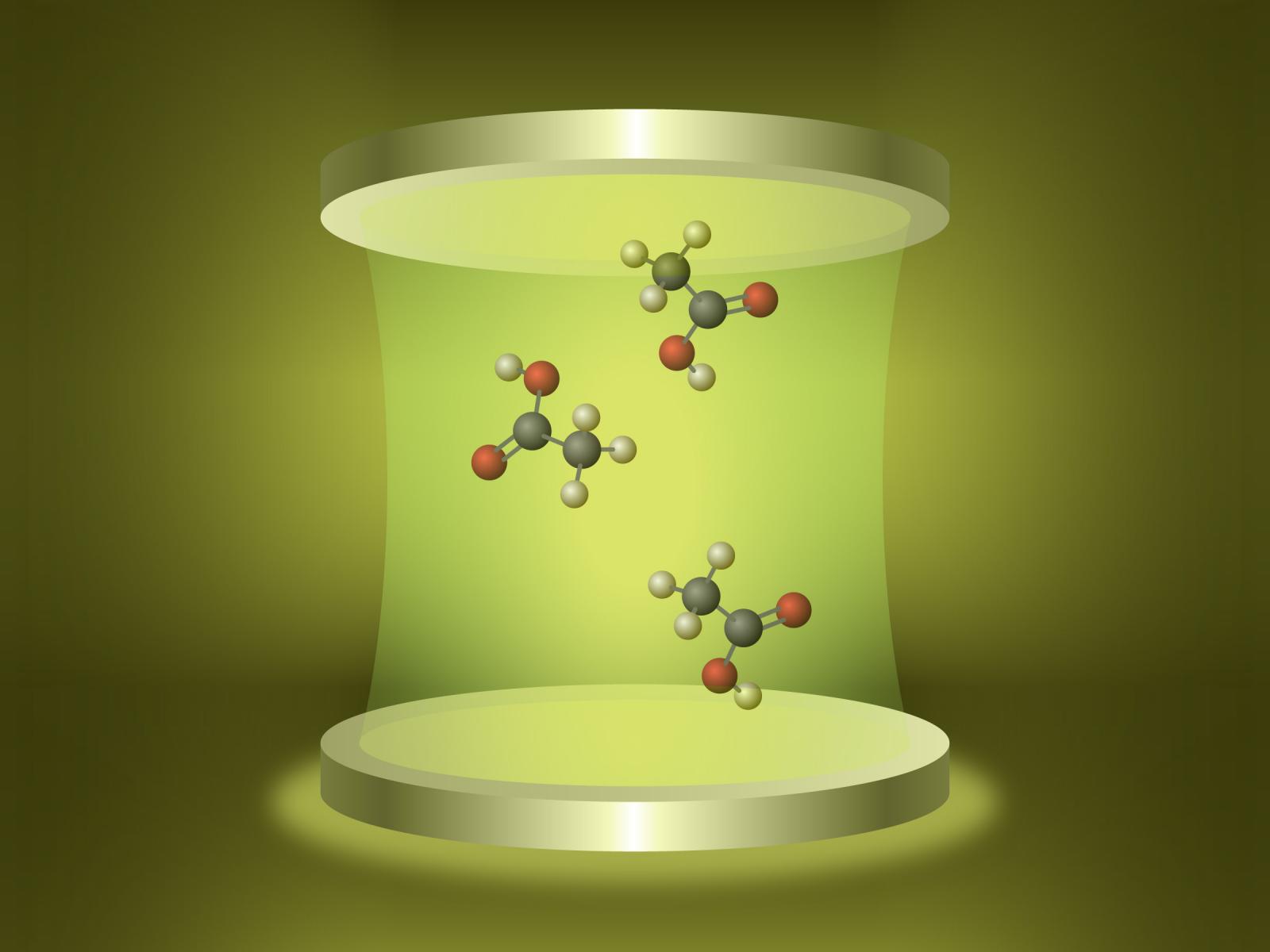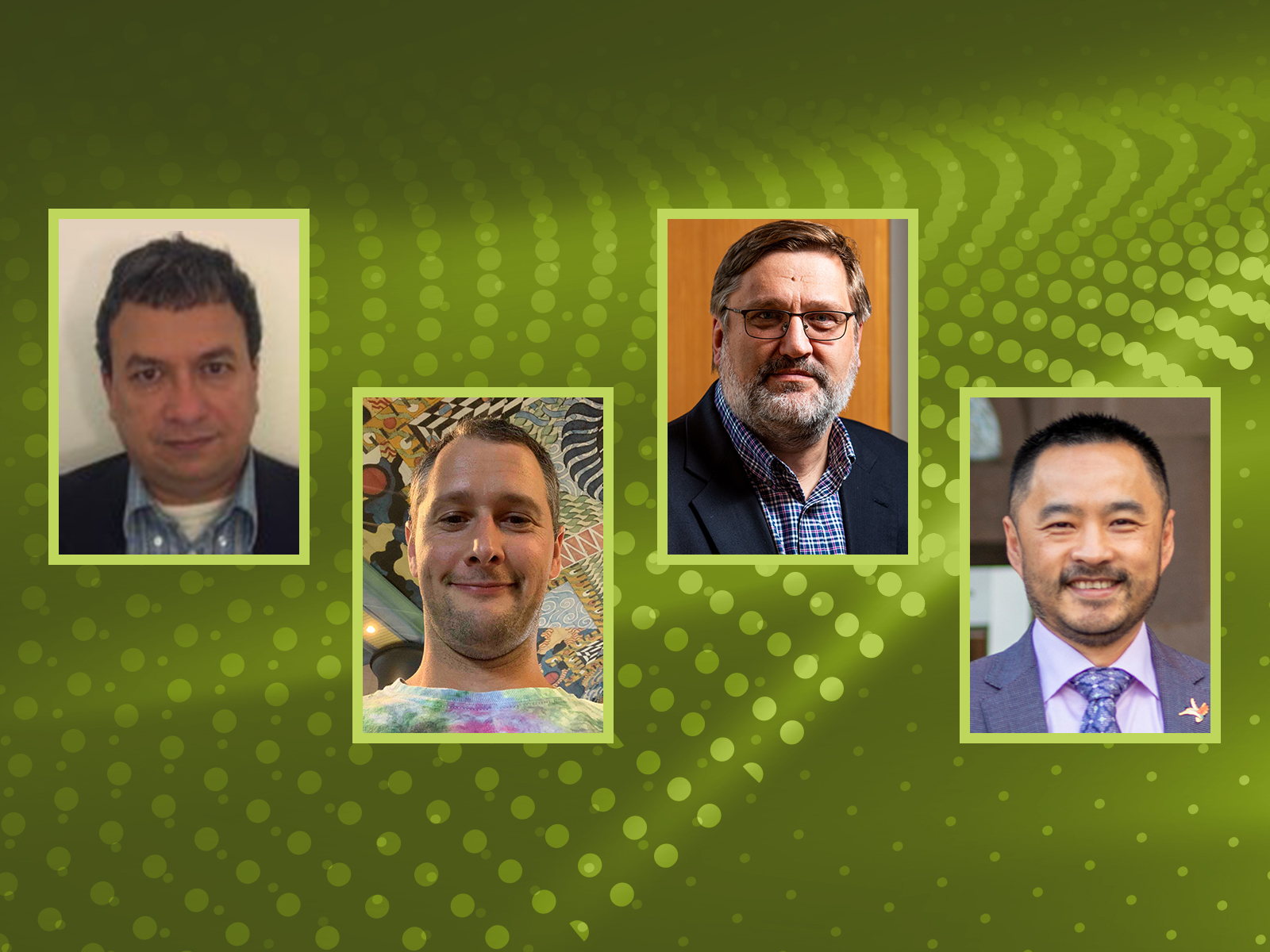Uncovering Molecular Polaritons
Developing new theoretical approaches to describe strong light-matter interactions

Light confined in cavities can interact strongly with molecules and influence their interactions and chemistry.
(Illustration by Nathan Johnson | Pacific Northwest National Laboratory)
Chemical reaction processes are often complex, potentially creating excess waste and expense. Discovering efficient and environmentally friendly clean energy solutions requires optimizing new and existing chemical reactions.
One emerging approach involves specially tailored light fields or “photonic” reagents. Often, light is viewed as either incidental to chemical reactions or a generic source of energy. However, fundamental studies on strong light-matter interactions support the idea that light can play a deeper role in chemical conversions.
Researchers have shown that cavities can confine and force photons of light and molecules to strongly interact. This creates hybrid light-matter states known as polaritons. Polaritonic chemistry represents an exciting reimagining to precisely control the energy flow within and between molecules. It offers alternate routes to direct and manipulate molecular motion and function.
A new research project led by Pacific Northwest National Laboratory (PNNL) will develop novel theoretical methods and scalable open-source software tools for studying polaritonic chemistry. The project is one of eight selected for funding by the Department of Energy to “advance the development of sophisticated modeling and simulation software for the chemical sciences.”
“Polaritonic chemistry has the potential to change how we approach chemical transformations,” said PNNL Physicist Niri Govind. Govind leads the overall project.
The PNNL investigators are Govind and Laboratory fellow Karol Kowalski. Investigators at partner institutions include University of North Carolina Charlotte professor Jay Foley and University of Washington professor and PNNL joint appointee Xiaosong Li.

Developing a new community of thought
Researchers are still developing an understanding of polaritonic chemistry. The new project will develop and use theory to help explore polaritonic chemistry at a fundamental level. The theory team plans to collaborate with experimentalists at the University of California, San Diego and Princeton University.
“There is so much to explore and interpret in this exciting field,” said Li.
Beyond the specific science goals, the team wants to build a community focused on computational molecular sciences.
“This funding will help us nurture the next generation of computational molecular scientists, including students from underrepresented communities,” said Foley “Polaritons are a new paradigm for approaching chemistry.”
This aligns with the team’s commitment to scalable open-source modeling software. By creating tools available to the broader computational chemistry community, the team hopes to spur additional interest in polaritonic chemistry.
“We can expand who is thinking about and contributing to the development of new scalable many-body methods for polaritonic systems,” said Kowalski.
Published: August 19, 2022